Utility lines can be either cables or pipes, yet when they are being uncovered, then you can come across quite a variety of possibilities. You might find a bare cable or you might find a bare pipe, but then again you may find something else. This is especially true with cables.
CABLES, CONDUITS & CASINGS
 Cables are placed in the ground a variety of ways, from direct buried to pre-cast duct runs.
Cables are placed in the ground a variety of ways, from direct buried to pre-cast duct runs.DIRECT BURIED – A bare cable placed in the ground.
 Direct buried phone cable unearthed in a test hole.
Direct buried phone cable unearthed in a test hole.CONDUIT – Many cables are placed in plastic conduit. Don’t expect that the conduit will match the APWA color for that utility. The majority of conduits are usually white.
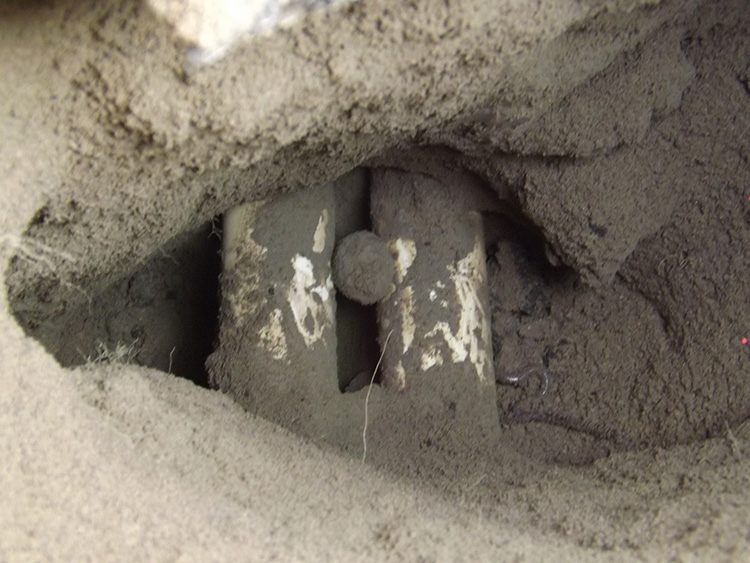 Two side by side conduits, one with coaxial cables and one empty, but in a test hole you would probably not know which was which.
Two side by side conduits, one with coaxial cables and one empty, but in a test hole you would probably not know which was which.CONDUIT DUCT – Conduits may be placed in groups, maybe just two, or maybe 6 or 8 or even more. Chances are that several of the conduits are actually empty and only meant for future use.
 Fiber cables in the left conduit, and phone cables in three others.
Fiber cables in the left conduit, and phone cables in three others. DUCT RUN WITH CONCRETE CAP – The term “duct run” can often be rather vague. It implies multiple conduits, and yet beyond that there can still be a variety of options. One of those possibilities is a combination of conduits with only a layer of concrete on top, a concrete cap. If for some reason a backhoe operator is unaware of the existence of the duct run, the bucket will usually hit the concrete cap when they are digging and alert them to the problem before any damage is done.
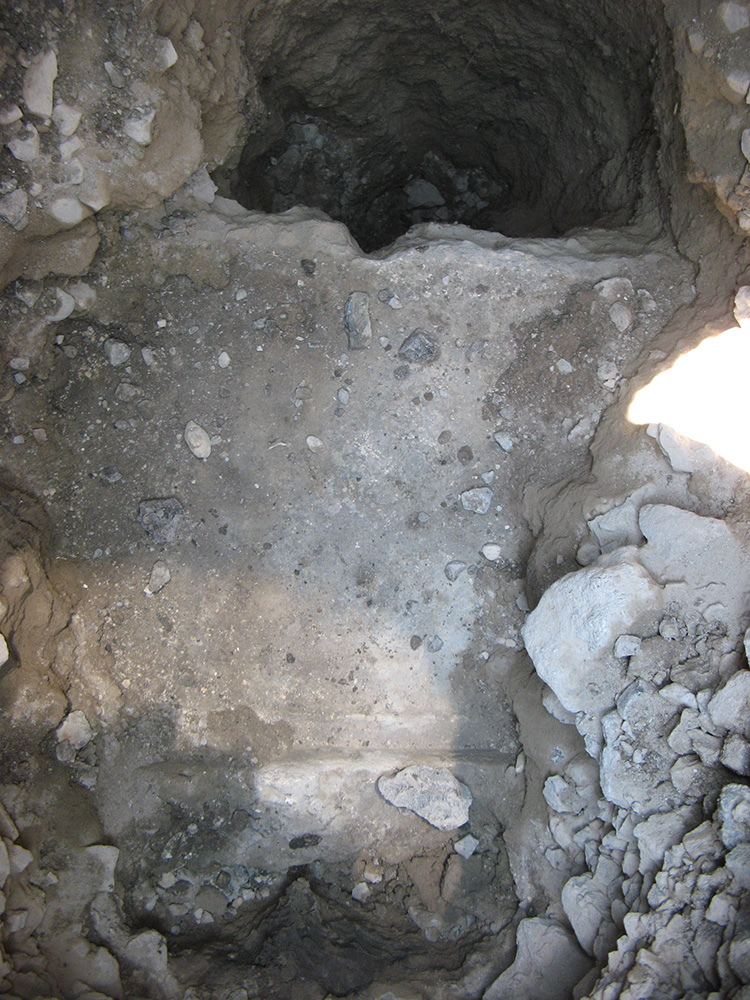 Looking down in a test hole on the concrete cap over a duct run.
Looking down in a test hole on the concrete cap over a duct run.DUCT RUN IN FLOWFILL – Another possibility is to lower the conduits into the trench, then pour flowfill into the trench. One brand of flowfill is Syncrete, so it may also be referred to in that way. Flowfill is NOT a type of concrete. It usually resembles concrete to some degree, but it is a much softer material. You can often dig away at it with your fingernail if you tried. The purpose of the flowfill is to protect the duct run, but without permanently sealing it in concrete where it would be impossible to gain access to the duct run at some later date, without completely destroying the cables.
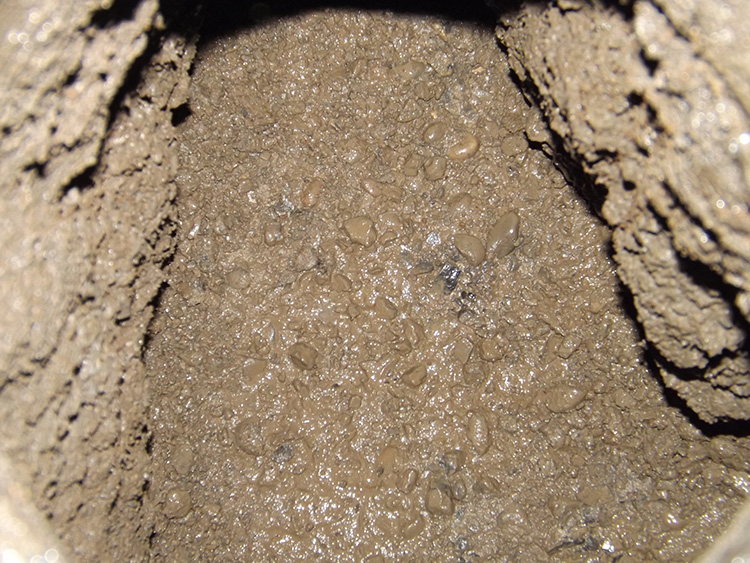 Looking down in a test hole on the flowfill that encompasses a duct run.
Looking down in a test hole on the flowfill that encompasses a duct run.PRE-CAST DUCT RUN – Pre-cast duct runs are not very common anymore. The flowfill and concrete caps are far more likely to be placed today. But there are a large number of pre-cast duct runs still in use.
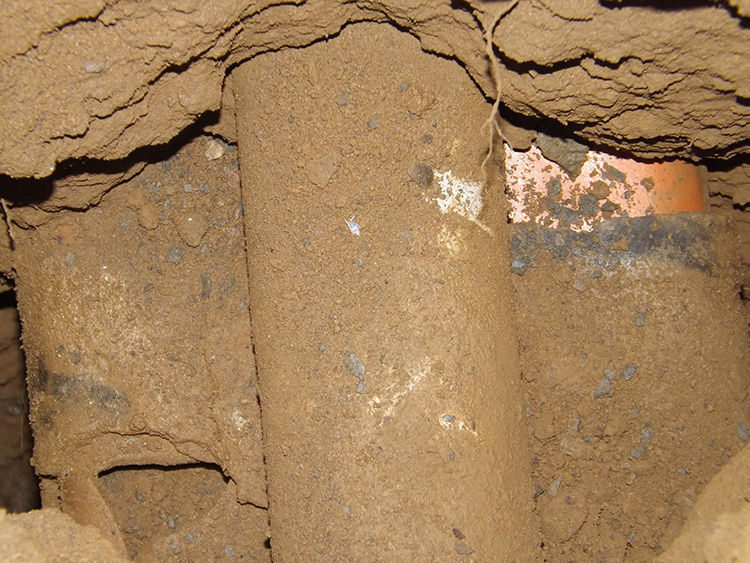 Looking down on a pre-cast duct run (running top to bottom) though this one also has a large conduit laid on top of the duct.
Looking down on a pre-cast duct run (running top to bottom) though this one also has a large conduit laid on top of the duct.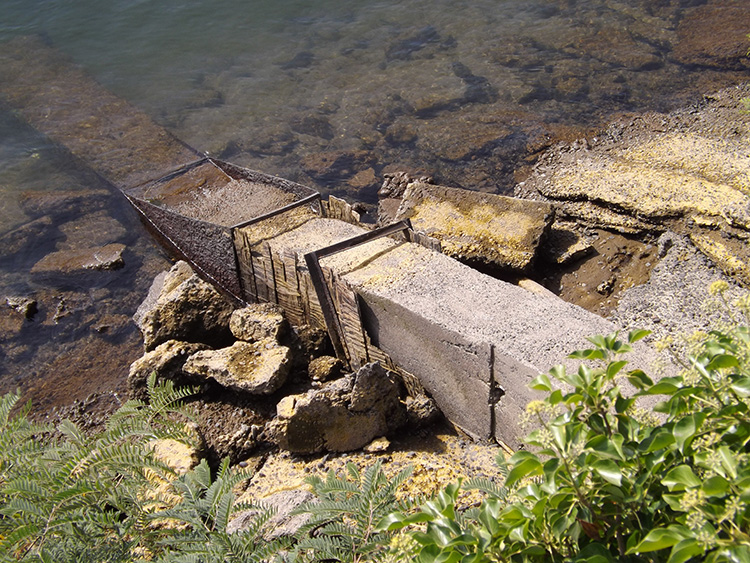 A very antiquated telephone duct run crossing a river. Natural erosion has gradually exposed the entire duct.
A very antiquated telephone duct run crossing a river. Natural erosion has gradually exposed the entire duct.Pipes are never placed in conduits, but there are situations where they are placed in Casings. Casings are steel pipe, larger than the pipe they are meant to protect, and placed under roads, and most commonly under railroad tracks. Casings are by far most common with gas pipes, but on some occasions, you can come across other utilities in casings, again, usually under railroad tracks.
Since it is usually gas pipes which are in casings, there is the possibility of minor traces of gas building up in the casings which can lead to an explosion. Therefore, casings have vent pipes to allow any gas particles to dissipate above ground. Vent pipes may be directly above the casings, or they may be angled off to the side. The best location underground for the casings is not necessarily the best place aboveground for a metal pipe to be sticking up.
 Any gas line under a railroad will be in a casing, and the casing will typically have two vent pipes, one on each side of the rails.
Any gas line under a railroad will be in a casing, and the casing will typically have two vent pipes, one on each side of the rails. Vent pipes allow any leaked gas to escape, and dissipate in the atmosphere. Bushings at each end keep the casing separated from the pipe to prevent any conductivity between the two.
Vent pipes allow any leaked gas to escape, and dissipate in the atmosphere. Bushings at each end keep the casing separated from the pipe to prevent any conductivity between the two.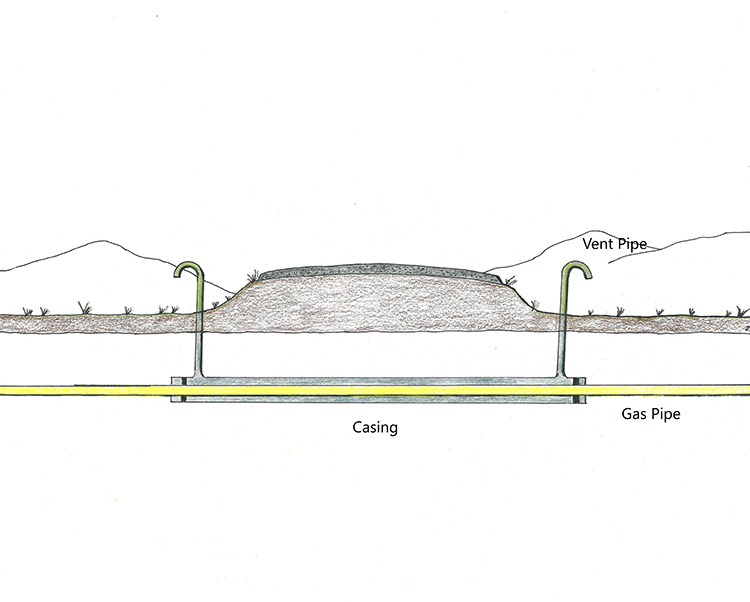 Here the vents are shown coming straight up from the casing, but that is not always the case.
Here the vents are shown coming straight up from the casing, but that is not always the case.
